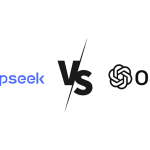AI-Driven Ransomware FunkSec: Blurring the Lines Between Hacktivism and Cybercrime
In the rapidly evolving world of cybersecurity, a new AI-assisted ransomware group, FunkSec, has emerged as a disruptive force. First identified in late 2024, AI-Driven Ransomware FunkSec has already claimed over 85 victims globally. By employing double extortion tactics—combining data theft with encryption—the group pressures victims to pay ransoms while selling stolen data to third parties. This article explores AI-Driven Ransomware FunkSec’s operations, the unique role of artificial intelligence, and the blurred boundaries between hacktivism and cybercrime.
What is AI-Driven Ransomware FunkSec?
AI-Driven Ransomware FunkSec is a ransomware group that gained prominence in December 2024 with the launch of its Data Leak Site (DLS). This platform centralizes their operations, enabling breach announcements, distributed denial-of-service (DDoS) attacks, and a ransomware-as-a-service (RaaS) model. Most of FunkSec’s victims are located in countries such as the U.S., India, Brazil, and Italy. The group’s demands are unusually low, sometimes as little as $10,000, and they sell stolen data at discounted rates, ranging from $1,000 to $5,000. By targeting both large corporations and smaller organizations, AI-Driven Ransomware FunkSec demonstrates its indiscriminate approach, emphasizing speed and scalability over high ransom demands.
The group’s ability to attract attention stems from its combination of technological innovation and strategic alliances. Reports indicate that FunkSec frequently collaborates with lesser-known threat actors, leveraging their expertise to expand the reach of their operations. This decentralized structure allows them to quickly adapt to changing circumstances, making them a formidable adversary in the cybersecurity landscape.
AI-Assisted Ransomware Development
What sets AI-Driven Ransomware FunkSec apart is its use of artificial intelligence. The development of their tools, including the encryptor, was likely AI-assisted, enabling rapid iteration despite the apparent lack of technical expertise among the group’s members. Their latest ransomware version, AI-Driven Ransomware FunkSec V1.5, written in Rust, demonstrates advanced capabilities, such as:
- Privilege elevation and disabling security controls.
- Deleting shadow copy backups.
- Encrypting files recursively across directories.
These AI-powered enhancements allow AI-Driven Ransomware FunkSec to maximize the impact of their attacks while minimizing the resources required. Additionally, AI aids in identifying vulnerabilities within targeted systems, automating reconnaissance tasks that traditionally required human effort. This efficiency not only accelerates their attack timelines but also reduces the likelihood of detection before the ransomware is deployed.
Double Extortion Tactics
AI-Driven Ransomware FunkSec employs double extortion—a strategy that combines data encryption with data theft. Victims face increased pressure to pay ransoms not only to regain access to their data but also to prevent the exposure of sensitive information. This dual-threat approach amplifies the financial and reputational risks for targeted organizations. By threatening to leak critical data on public forums or sell it to competitors, FunkSec ensures that even those with robust backup systems feel compelled to negotiate.
Furthermore, FunkSec’s use of AI allows them to tailor their extortion tactics. By analyzing stolen data, the group identifies highly sensitive information that can maximize leverage over victims. This targeted approach underscores the sophistication of their operations and highlights the growing role of machine learning in cybercrime.
Blurring the Lines: Hacktivism Meets Cybercrime
AI-Driven Ransomware FunkSec’s activities reveal a troubling convergence of political agendas and financial motives. The group aligns itself with hacktivist movements like “Free Palestine” and has ties to defunct entities such as Ghost Algeria and Cyb3r Fl00d. Evidence suggests that some members engage in hacktivist activities, further complicating their identity as a purely criminal enterprise.
Key actors associated with AI-Driven Ransomware FunkSec include:
- Scorpion (aka DesertStorm): Promoter of the group on underground forums.
- El_farado: A prominent figure advertising AI-Driven Ransomware FunkSec.
- XTN: Associated with a data-sorting service.
- Bjorka: An Indonesian hacktivist whose alias has been linked to FunkSec activities.
By intertwining political activism with financial extortion, AI-Driven Ransomware FunkSec blurs the ethical and operational boundaries between hacktivism and cybercrime. This dual identity complicates international efforts to combat their activities, as traditional methods of addressing ransomware attacks may not apply to their politically motivated operations.
Ransomware-as-a-Service (RaaS) Model
AI-Driven Ransomware FunkSec’s operations highlight the growing prevalence of RaaS models. By providing customizable ransomware tools to affiliates, AI-Driven Ransomware FunkSec lowers the barrier to entry for cybercriminals. This model not only expands their reach but also enables less experienced actors to participate in sophisticated attacks.
The RaaS model also fosters a competitive ecosystem among affiliates, incentivizing innovation and efficiency. FunkSec’s affiliates are reportedly evaluated based on their success rates, creating a meritocratic system that rewards the most effective operators. This approach ensures continuous improvement of the group’s tools and tactics, keeping them one step ahead of defenders.
Victimology and Targeting
FunkSec’s victims span diverse sectors, including government, healthcare, and education. Notably, the group leverages old hacktivist leaks, repurposing data to launch new attacks. This recycling of information underscores their opportunistic approach. By repurposing existing data, FunkSec reduces the effort required for initial infiltration while maintaining the appearance of an advanced threat actor.
The group’s focus on mid-sized organizations—often perceived as less secure than large enterprises—illustrates their strategic targeting. These organizations frequently lack the resources to implement robust cybersecurity measures, making them ideal victims for ransomware groups seeking quick payouts.
Global Impact and Response
The emergence of AI-driven ransomware groups like FunkSec underscores the urgent need for robust cybersecurity measures. Organizations are advised to:
- Enhance Endpoint Protection: Use advanced tools to detect and mitigate threats.
- Implement Regular Backups: Maintain offline backups to recover data in case of ransomware attacks.
- Educate Employees: Conduct training to recognize phishing attempts and other attack vectors.
- Adopt AI Defense Systems: Leverage AI to detect anomalous activities proactively.
Governments and industry leaders must also collaborate to address the systemic challenges posed by AI-assisted cybercrime. Initiatives to regulate the use of AI in cybersecurity and foster international cooperation are essential to curbing the rise of groups like AI-Driven Ransomware FunkSec.
Conclusion: The Rise of AI in Cybercrime
AI-Driven Ransomware FunkSec exemplifies the unsettling convergence of technology and cybercrime. By leveraging AI, the group demonstrates how even novice actors can execute sophisticated attacks with global ramifications. As the lines between hacktivism and cybercrime blur, it is imperative for organizations to stay vigilant and adopt advanced cybersecurity strategies. Moreover, the rise of AI-driven threats calls for a reevaluation of traditional defense mechanisms, emphasizing adaptability and proactive measures.






